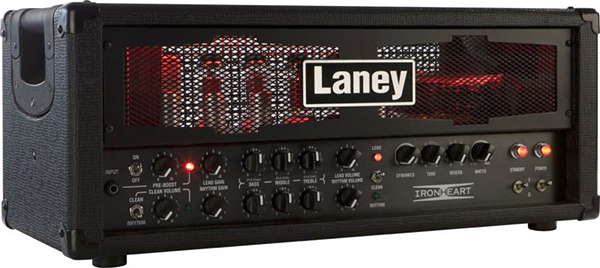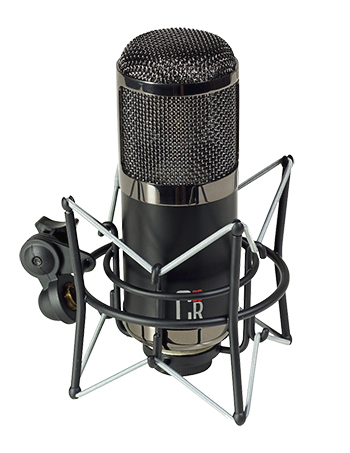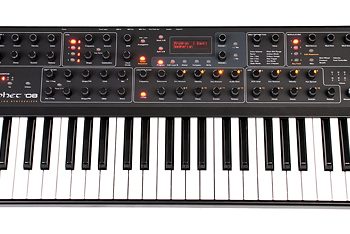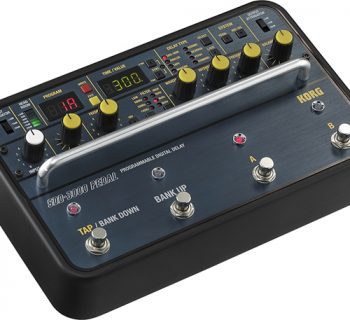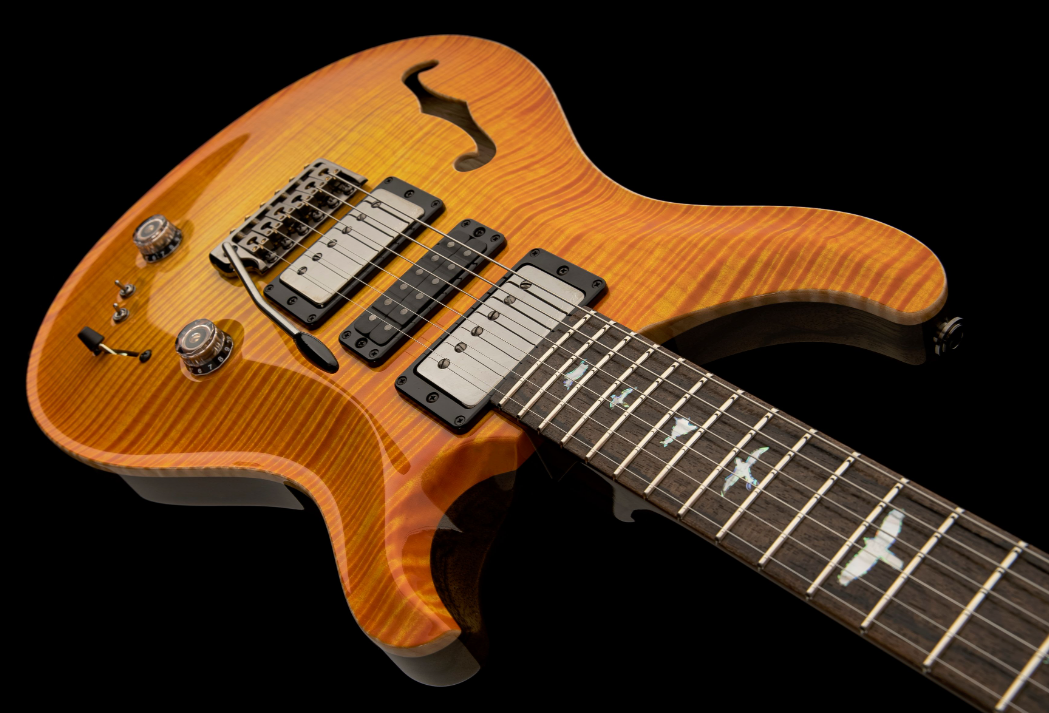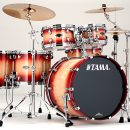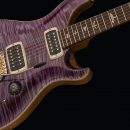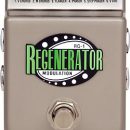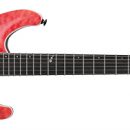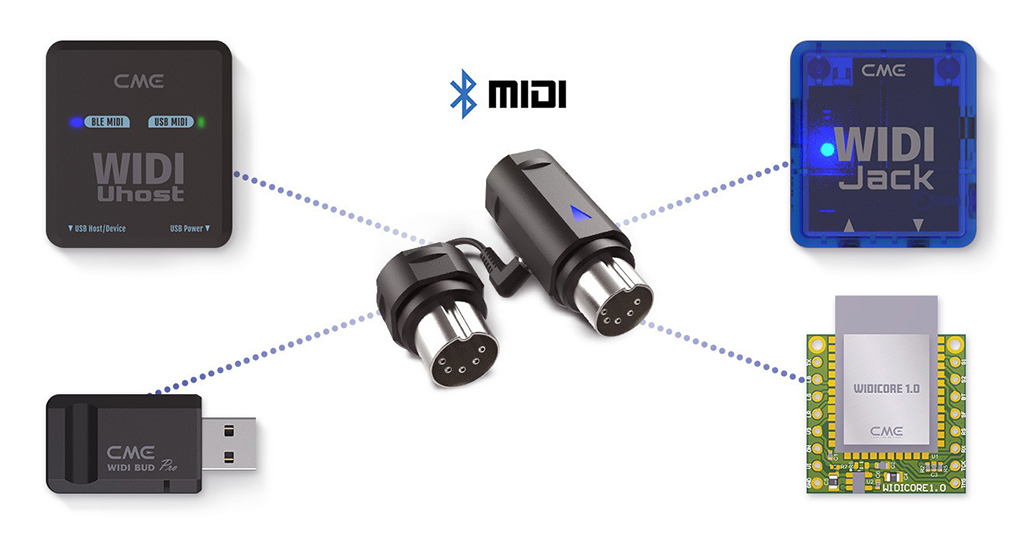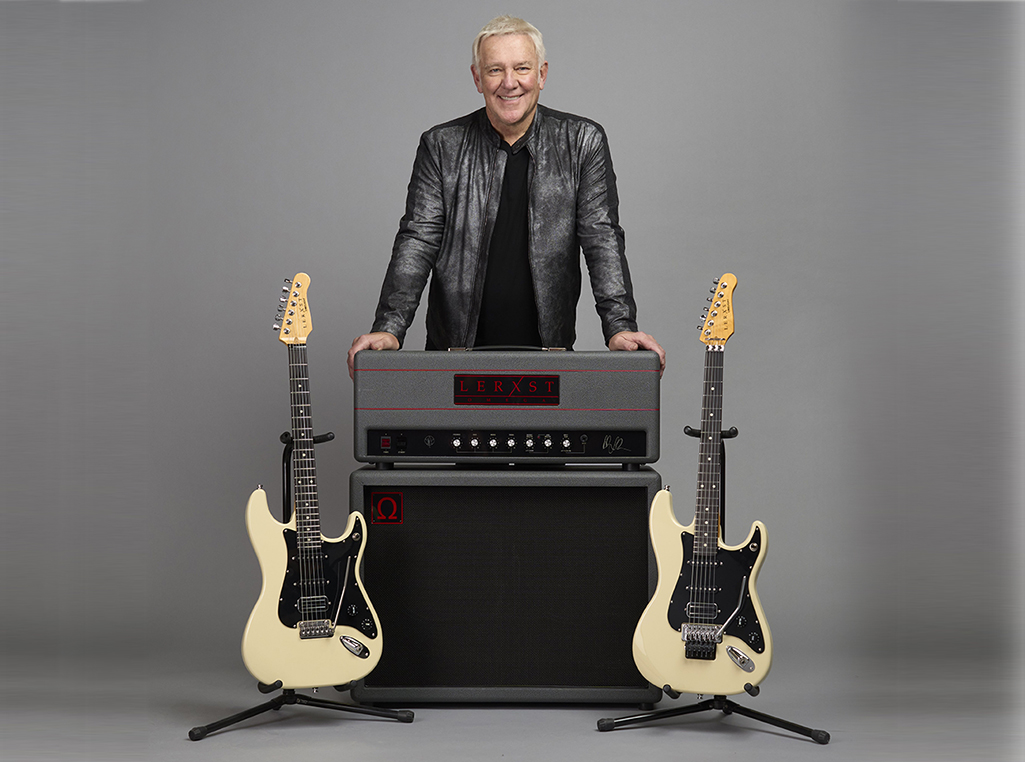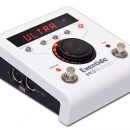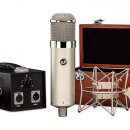Long before Robert Plant penned the words to “Stairway to Heaven” and subsequently took over the rock and roll universe with Led Zeppelin, Plant and Bonham were jamming with guitarist Lyndon Laney in their local UK circuit back in the 1960s. Always a tinkerer, Lyndon built his first guitar amp in 1967 and Laney Amplification was born as a result.
As with much of their product line, the Laney Ironheart series of tube amps are designed in England but manufactured in Asia, and we have to commend Laney for having really nailed this design/manufacturing relationship. The Ironheart IRT60H tube amp we reviewed was really nothing short of astounding. We have never experienced a tube amp with this much versatility at anything close to its price. In fact, for double the street price, we would still sing the Ironheart’s praise, and our editorial team truly shook our heads in disbelief trying to figure out how so much amp could be delivered for such a reasonable price.
| Category | Value | Rating |
| Features | 20% | |
| Usability | 25% | |
| Sound | 25% | |
| Documentation & Support | 10% | |
| Price | 20% | |
| OVERALL RATING = 3.5 Stars 3.6 stars or better: Outstanding, WIHO Award 3 stars or better: Worth considering 2 stars or better: Suited to specific needs 1 star or less: Not recommended |
||
A three channel, 6L6-based high gain amp with a low noise floor, built-in boost circuit, effects loop, power attenuator, and easy rig interfaces for under $900? The Ironheart IRT60H will force you to seriously rethink why you’re spending so much more for other amps. It certainly made us reflect on the topic—a lot!
The Laney IRT60H offers a shining example that you really don’t have to spend a fortune to get good tone from a highly versatile amp. Although the tone on display won’t cause a typical MusicPlayers.com reader to ditch their pricier boutique amp, you may be very well inclined to pick one of these up as your spare/backup/gigging amp. Rock and metal players will really enjoy the sound and functionality of the Ironheart IRT60H, and if you’re on the younger end of our readership spectrum, we can’t imagine a better value when you’re ready to step up to your first serious/pro guitar amp.
Features
The Laney IRT60H in no uncertain terms was jam-packed with features. Featuring a pair of TAD 6L6 power tubes and four ECC83 preamp tubes, this 60W, high-gain head packs a modern punch suited for many different applications.
 Before our guitar signal even hit one of the three channels available, we had an option of using the amp’s pre-boost feature. This is just like having a clean boost pedal built right into your amp, and it can be applied to all three of the amp’s channels. Exploring those channels, the Laney IRT60H’s clean and rhythm channel shared an EQ section, while the lead channel had a dedicated EQ. Both EQ sections have push/pull knobs on every knob, controlling preset frequency shifts across the lows, mids and highs.
Before our guitar signal even hit one of the three channels available, we had an option of using the amp’s pre-boost feature. This is just like having a clean boost pedal built right into your amp, and it can be applied to all three of the amp’s channels. Exploring those channels, the Laney IRT60H’s clean and rhythm channel shared an EQ section, while the lead channel had a dedicated EQ. Both EQ sections have push/pull knobs on every knob, controlling preset frequency shifts across the lows, mids and highs.
The Laney also features independent volume controls for all three channels as well as a master volume, allowing us to get all of our channels nicely balanced. Rounding out the front panel knobs, we had Dynamics, Reverb, Watts and Tone knobs. Dynamics controlled the amount of sag, changing the response of the low end from fast and tight to big and flubby (err… we mean vintage, yeah…).
The digital reverb was a nice touch and a welcomed change from typical spring reverbs (we really liked this reverb, explored more in the Sound section). The Watts control was another standout feature: it enabled us to dial down the output from 60 Watts all the way to 1W without having to choose among a handful of fixed presets like half-power, 5W, etc.
The Tone knob is another unique feature, served really well to round out the frequency response of the amp overall, well after the EQ sections of the individual channels. This is a great feature for players gigging regularly in different venues. In your primary rehearsal studio, have the Tone knob set at 12:00 (the neutral point) and dial in your EQ to taste on your amp channels. As you gig from one venue to another, the Tone knob gives you an instant, simple adjustment of your amp’s overall tone to suit the room, without having to tweak all of your individual tone settings.
The back of the amp features typical appointments, including the most clearly labeled ¼” speaker outputs we’ve ever seen, and a serial effects loop with a bypass/0dB/-10dB switch to adjust for use with either rack gear or vintage pedals or to provide hard bypass. In addition to a 5-pin DIN connector for Laney’s optional footswitch, two ¼” jacks are provided for easy interfacing with the audio looper/switcher of your preference.
Usability
We found the IRT60H to be fairly typical in terms of usability for a multi-channel amp. It’s not exactly plug-and-play with so many options, but we didn’t have to turn many knobs or finesse things to get it to sound good, either. We appreciated that all of the amp’s knobs were on the front (as opposed to certain amps where half of the controls are hidden on the rear of the amp). This made dialing in new sounds on-the-fly a quick process.

Why did we so appreciate the output jack labels? They were very specifically marked to completely take the guesswork out of which connections should be made with various speaker cabinet arrangements.
Another fantastic production design was the inclusion of two handles located at either end of the amp’s top, allowing for a more ergonomic lift. This was one of those “Why didn’t anyone think of this sooner?” epiphanies as it’s just truly awesome to experience. The IRT60H’s curb weight was right in line with many competitors but literally felt 30% lighter just from the easier handling.
The clean and rhythm channel share an EQ section, which we felt was only slightly limited because of just how much tone control there was. The Lead and Rhythm channel EQ sections featured push/pull pots on EVERY knob to choose different frequency bands, sort of like having a secret, pre-defined parametric EQ built into your amp. This gave us tremendous versatility in the voicing of whichever channel we were using.
Laney, in a healthy dose of forward thinking, included a few other features into this amp we felt were not only very useable, but should be included in many other amps as well. One of those features was the Dynamics knob. Knowing the amp can be mated to an infinite number of cabinet and speaker combinations, this knob allows for low-end articulation manipulation. From fast seven-string palm muting passages to big, airy, end of the world power chords, we were able to dial in just how fast we wanted this amp to grab our guitar’s signal.
Sound
We mated the Laney IRT60H to a few cabinets including a Marshall 1960bx 100w 4x12 cabinet with Celestion G12M-25 Greenback speakers and an ENGL Pro series 2x12 with Celestion V30s. We used a healthy dose of effects, both digital and analog, in order to see not only how good the amp did or didn’t sound, but how it would sound in a real-world application.
The clean channel was as straightforward as you can get, extremely clean, with tone more akin to American amps than to typical British models. If you want bell-like tones drenched in delays and reverbs, this is definitely the setting for you.
If you prefer a bit more soul to your clean tone, the Rhythm mode takes over with an obvious change to the gain structure from the clean channel. The lows were beefy, the highs sparkled, and we were able to dial in just the perfect amount of mids thanks to the push/pull equalization section. A little bit of overdrive in front of the amp on this channel took us into gritty, swanky, blues country. Now we’re cooking!
Of course, the rhythm channel only begins there, as it also reveals some of the high-gain sound and vibe of the amp. With the gain at about 12:00, we were able to achieve a modern metal type sound with our Gibson Les Paul Custom. We enjoyed this setting with a little bit of overdrive in front of the amp for our lead tones as well, and it provided a good balance of high gain with very controlled dynamics. Moving beyond 12:00 on the Gain dial (as expected) crushed the dynamics and made the sound considerably more aggressive, and it stopped just short of face melting.
Switching to the lead channel really brought the amp to life. It sounded very similar to the rhythm channel, but had slightly more dimension to it. The lead channel was a little bit punchier, a little bit richer, and a little bit more aggressive sounding than the rhythm channel. Dialing in some scooped mid sounds was where this amp lived and breathed. Harmonics jumped off our test guitars with relative ease (mainly Gibson, Ibanez, and Carvin solid-bodies).
We did have to stop just shy of describing the amp as three-dimensional, as it could have been just a bit more harmonically rich in its overtones. But still, this amp still leaves virtually every similar amp near its price point in the dust.
The boost feature is essentially like getting a clean boost pedal built into your amp, as it hits the instrument signal pre-EQ on all three channels, and it has one level control for functionality (it’s footswitch-able, of course). It was definitely a bit solid-state sounding in its tone, and won’t cause you to ditch your favorite boutique boost pedal. But if you don’t have one, it’s useful in various scenarios.
At low settings, it worked well for providing clean boost, and we found it useful in place of a solo boost or secondary volume control. At medium settings, alternative rock players will enjoy the buzzy/fizzy character of the boost tone applied to the clean channel as an alternate tone that is significantly different from the more classic hard rock tones that the rhythm and lead channels provide.
On the rhythm and lead channels, settings in the 8:00 – 11:00 range were most useful for adding a touch of additional compression to the tone. When pushed further, however, we got less desirable tone breakup.
The digital reverb was lush and never clouded up the sound. It was a refreshing change from typical spring reverb units commonly found in guitar amps, and sounded like any high-quality studio reverb you’d choose to apply after the fact. It was never overbearing or muddy. On the clean channel, the reverb was especially musical and lush sounding.
The overall Tone knob was genius, too. Once we set the volume and tone for the independent channels, we were able to adjust the overall tone of the amp with one knob. This worked as described in the Features section, and we definitely appreciated the useful taper and sweep of the frequency band of this tone control. This one knob made it a breeze to accurately dial in what we weren’t hearing in the amp whenever we changed from one venue to another (in one instance, we felt the amp was a bit too bright in a smaller room, so we dialed the Tone knob back to 11:00 and the problem was solved across all three channels).
The built-in power attenuator was also a well-enjoyed feature. Dialing it back from fully clockwise (60W), the volume of the amp starts decreasing, but the feel of the amp remains, all the way down to a bedroom 1W volume! The sound stayed aggressive and beefy, and we really wished this feature were included on all of our amps. It worked so well, in fact, that we would probably purchase the 120W version of the head (we play many large venues) knowing just how easy it is to control the volume of this amp without losing our tone.
The effects loop is another high point on this amp. To start, it has a less-than-typical amount of bleed for a series-wired loop. Bleed in the loop can create a comb filtering effect, which produces a highly undesirable sound when you’re not in the mood for flanging. Here, it was all but a whisper. We had great success with various pedals including a Fulltone OCD and Eventide H9, and alternately placing a multi-effects unit, the TC Electronic Nova System, in the loop.
Was it all nirvana, all the time? Almost. One thing we found less than desirable on this amp was cranking the volume up past the sweet spot, which yielded quickly diminishing—and even backwards—results. Find the sweet spot and stay there! We found this to be somewhere between 11:00-12:00 on each of the three channel volume knobs. When we proceeded past this, the amp didn’t get appreciably louder, but it became airy and open sounding in a bad way. If you need to crank it up at unhealthy, fist pumping, metal volume, opt for the more powerful IRT120H amp. But for “reasonable” volume rehearsals in all genres including metal, the 60W IRT60H is well suited to the task.
Documentation and Product Support
Included with the amp was a booklet that thoroughly described the amp’s many functions, and it left none of our questions unanswered. If only things were that simple.
Surprisingly, there is no official Laney product forum for users to post questions/comments, so you might be faced with emailing Laney directly for assistance. Good luck with that. The website support section offers a form to fill out with the caption, “Please note that due to the very high volume of queries we cannot always guarantee a response.”We must admit, in the absence of a proper, well-moderated product forum like so many other manufacturers websites these days, we are relieved that we didn’t need any help with this head because Laney tells us flat out we may not get any.
Price
Forget all of our little nitpicks. The Laney IRT60H (MSRP $1,699.99) sells for approximately $850. This is a fantastic value. At double the price, if we told you that you were getting an all-tube, three channel, high-gain head packed with features like a power attenuator, adjustable effects loop, and built-in boost circuit, you would agree that even that was a good price for the amp. To get all of this functionality—and have it sound quite good—for under $900 is impressive.
We feel Laney has really raised the bar for value in a guitar amp based on the price and feature set, but many players will simply gravitate towards this amp because of its tone and feature set. For such a versatile, 6L6-flavored amp, you can’t touch this amp for anywhere near its price. Clearly, there is nothing to lose by taking a chance on the Ironheart IRT60H, whether used as your primary workhorse or as a backup.
Contact Information
Laney Amplification
www.laney.co.uk
| Evaluation Short-List |
|

